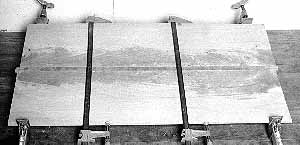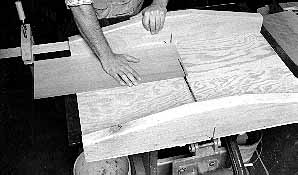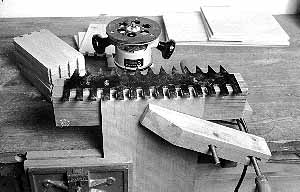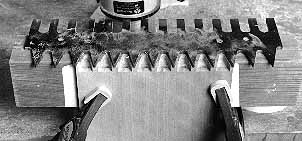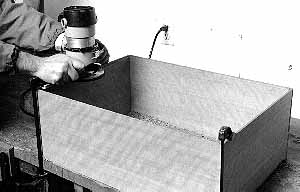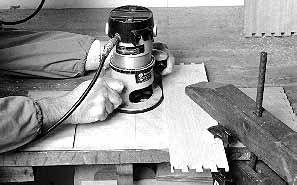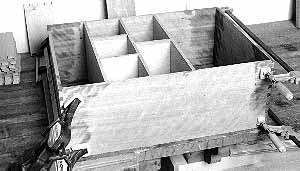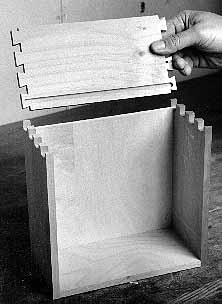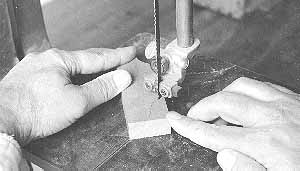Tansu
  |
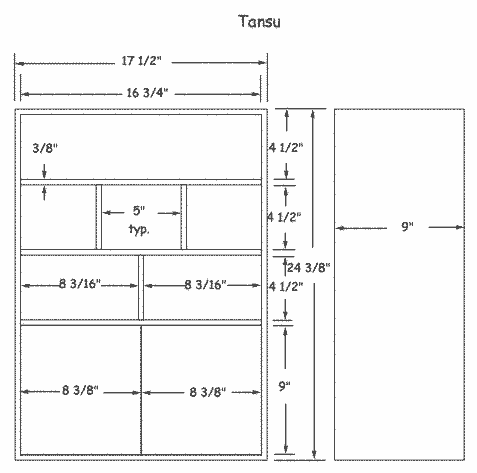
Cut List Tansu
If you use parts of different thickness for the spacers or carcass sides, you will need to alter dimensions accordingly.2- 3/8 x 9 x 24-3/8 sides
2- 3/8 x 9 x 17-1/2 top and bottom
3- 3/8 x 8-3/4 x 17-1/8 spacers
3- 3/8 x 8-3/4 x 4-7/8 spacers
2- 3/8 x 4-7/16 x 16-11/16 drawer front and back
6- 3/8 x 4-7/16 x 5-9/32 drawer fronts and backs
2- 3/8 x 4-7/16 x 8-1/8 drawer fronts and backs
12- 3/8 x 4-7/16 x 8-3/4 drawer sides
2- 3/4 x 9 x 8-3/8 doors
1/4" plywood to fit for the box back and drawer bottoms.
You'll need a lot of lumber for this project, because of all the drawer parts. There is no sense in using expensive wood for the sides and rears of the drawers, so get a secondary wood for this like alder or poplar. For the carcass and drawer fronts choose something pretty, like the curly madrone I chanced upon and used here (which, unfortunately, is probably difficult to find).
You can reduce the amount of lumber you have to buy for this project by resawing 1x lumber down the middle and using both pieces- you'll get two for the price of one. I started with pieces that were fully 1" thick and, after planing the resawn pieces, ended up with 3/8" thick pieces. If all you can find is 3/4" thick stock, resaw this for the drawer parts and use it at whatever thickness it comes out at (probably 5/16" or so). But for the carcass this is a bit too thin. If you start with 3/4" stock for these pieces, plane them to 1/2", or leave them at 3/4". The dovetail jigs will take any thickness below 1". Note that if you use different thicknesses you will have to jockey around with some of the dimensions I've given.
Use your secondary wood for the spacers between the drawers. Your first step, after resawing and planing, is to glue thin pieces of your primary wood onto the leading edges of the spacers where they are visible. Clamp up such an edge gluing as in photo 1. When this is out of clamps rip all your stock to width.
